Rules - DM
Rules act as automation mechanisms that trigger specific actions in response to document events. These events include:
Registering a new document, which means adding a new item to the system.
Updating an existing document, which means changing some element or property of the document.
Selecting an action in the document details, such as adding an attachment to a document.
A variety of actions that are defined in the system can be assigned to rules, such as:
Sending an email, which can be a notification of a new document or a change to it.
Setting the color of a document, which allows you to visually highlight a document based on its status, type or priority.
Sending SMS messages, which can be used to quickly notify of urgent updates or requirements.
Rules allow you to create an effective system that supports document management by automating processes.
For more on stocks: Go >
It is crucial to design rules that are simple and thoughtful, with unambiguous names indicating their function or application. It is also important to describe each rule in detail to make it easy to understand its purpose and operation, which provides transparency and efficiency in management and makes the IT team's work easier.
New rule
To add a new rule, go to Document Management > Rules, and then click the "New Rule" button.

Filling in the rule
Next, in the "New rule definition" window, fill in the desired fields and click the "Save" button.
| 1 | Rule activation - Checking the "Active" option activates the rule. |
| 2 | Name - Used to identify the rule. |
| 3 | Description - Allows you to understand the purpose of the rule. |
| 4 | Trigger event - Select the event that will trigger the rule, for example, "Registration of a new document" (Optional). |
| 5 | Schedule(tasks) - Specify when the rule is to be active (Optional). More regarding schedules: Go > |
| 6 | Position - Determine the order in which the rules are executed, if there are more rules. |
| 7 | Starting rule - Optional setting of the rule to be the trigger for the current rule. |
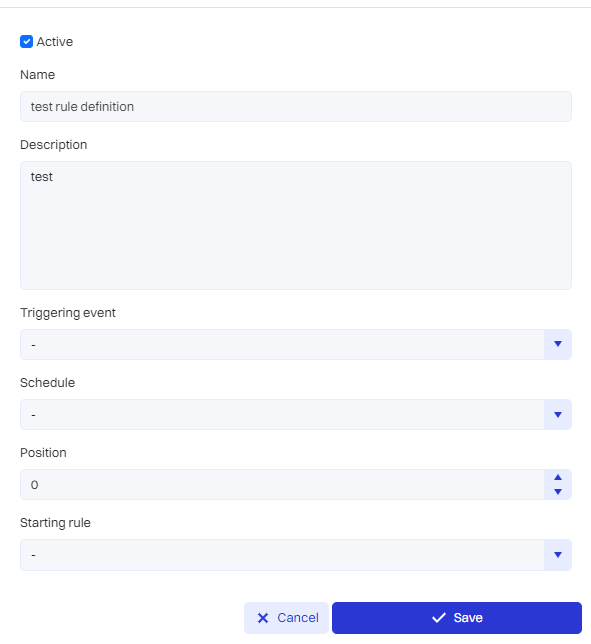
Specifying the action/condition of the rule
After creating a rule, the user will be taken to the rule creation window. Rules in Oxari work on an "if-then" basis, where certain conditions (if) trigger certain actions (this). In this case, the triggering event is "Register new document." To assign an action or condition to the event, click on the respective tile.
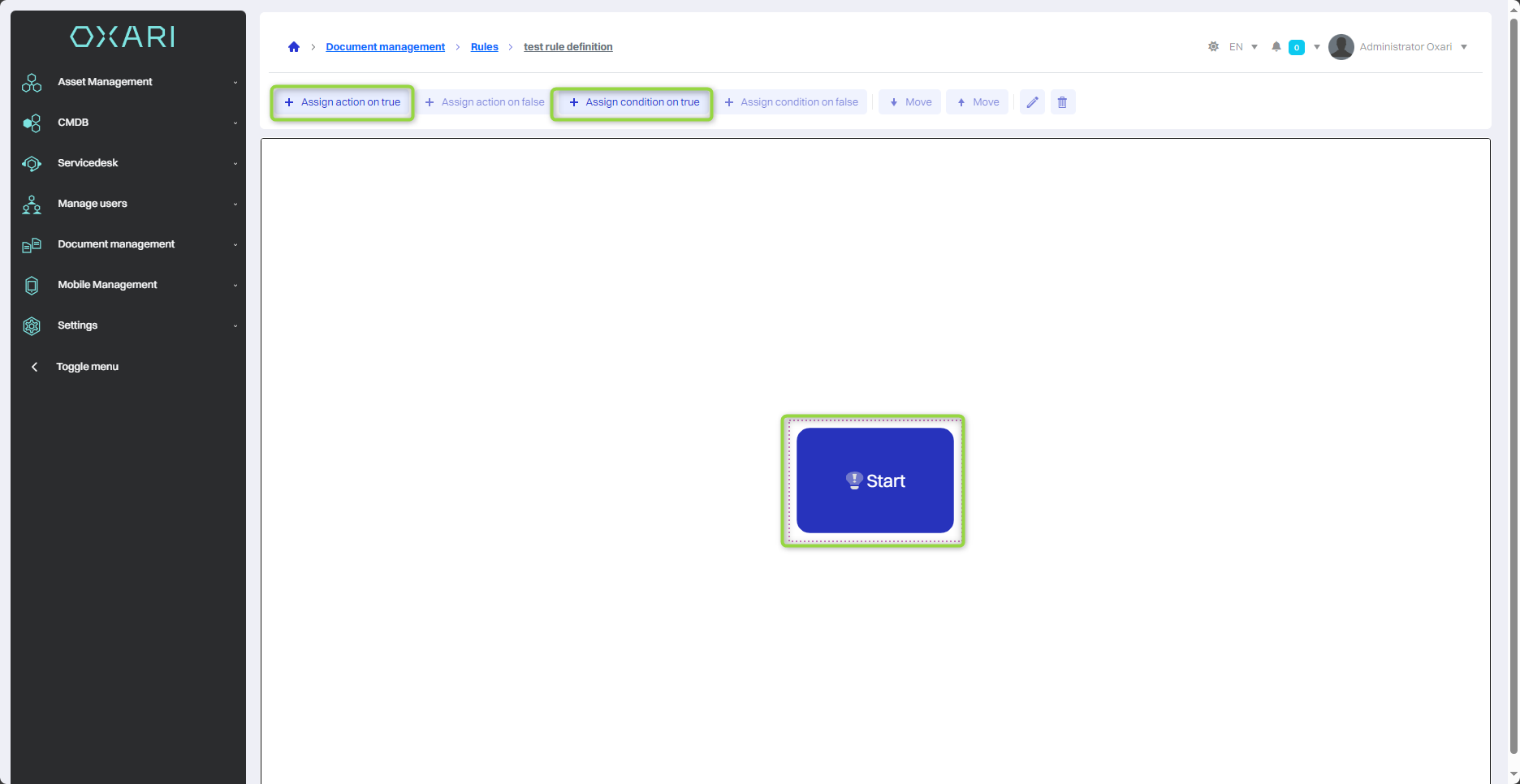
Assigning a condition
After clicking on the tile, two options will be available to use "Assign action for TRUE" and "Assign condition for TRUE." In this example, a condition will be added first. Assuming in the example that a specific action is required only for the document type named "SLA". Click the "Assign condition for TRUE" button.
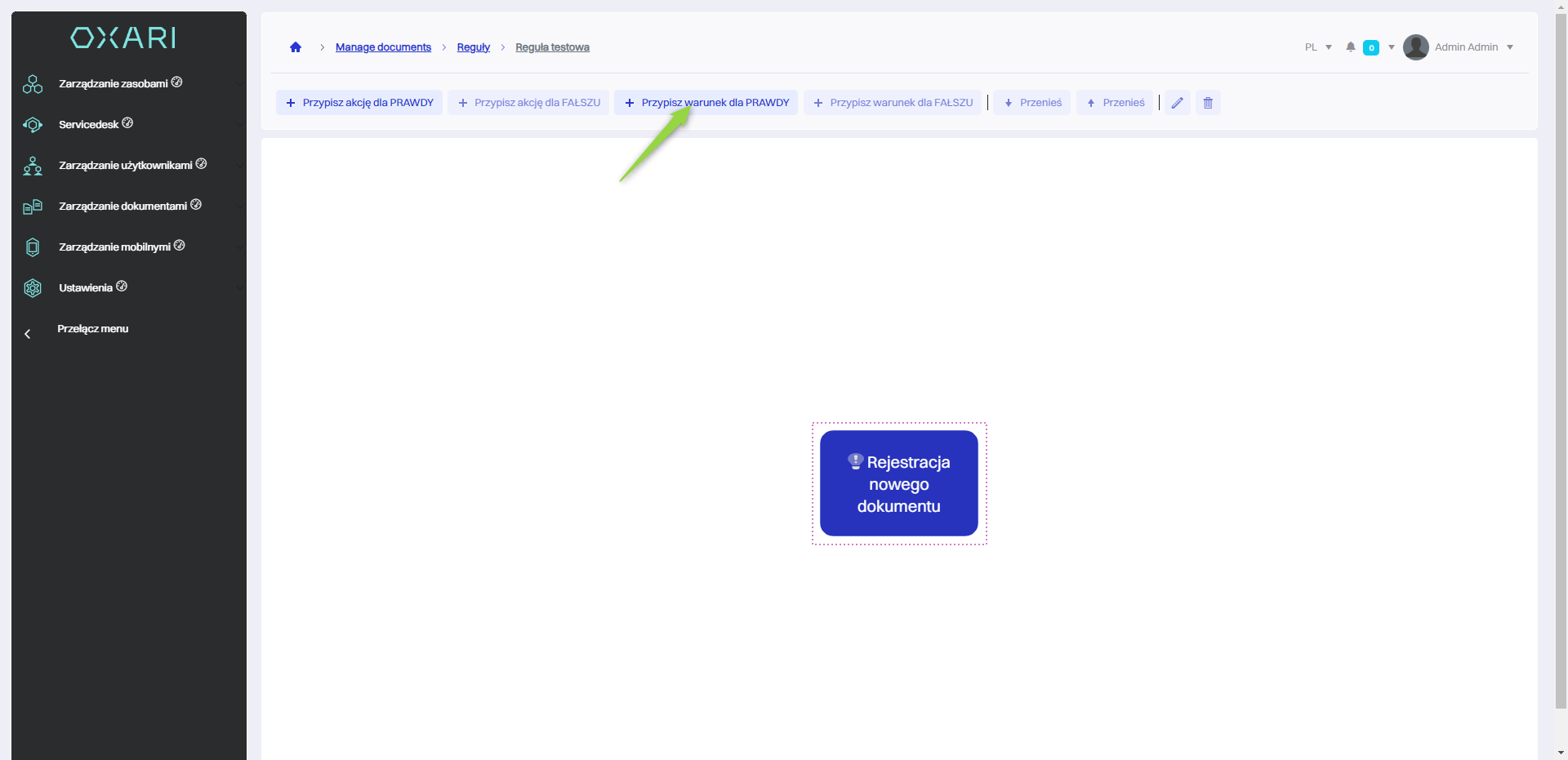
Then, in the "Select condition type" window, the user has a choice of specifying conditions for the newly created rule. In the "New" field, you can select the criterion by which the rule will be applied, for example:
Dictionary attribute, which allows the rule to respond to changes in specific attributes from the Document Management > Attributes section
More on attributes: Go >
Date difference, which allows you to set the rule to operate within a specific time frame or in response to document expiration dates.
Document type, which means that the rule will be applied only to the selected document types.
In this case, "Document type" is selected, and then click the "Save" button.
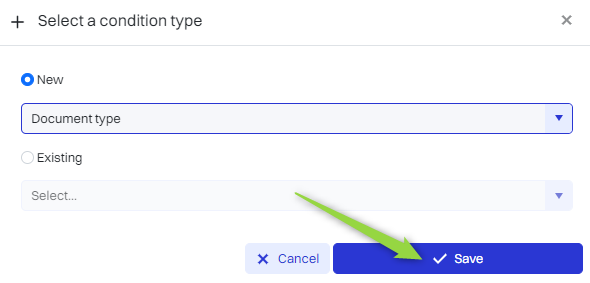
Then in the "New condition" window you will find:
| 1 | Field for entering the name of the new condition. |
| 2 | A drop-down menu with a "contains in" option so that the condition can be determined based on the text content in the name. |
| 3 | The field for entering the condition (Name is contained in SLA) which means that the condition will work when the document type is "SLA". |
You should, fill in the fields, and then click the "Save" button.

A given condition has been created and both actions and subsequent conditions can be assigned to it in the Oxari system. These actions and conditions are designated to be executed when the original condition is met (TRUE), as well as to be executed when the condition is not met (FALSE).
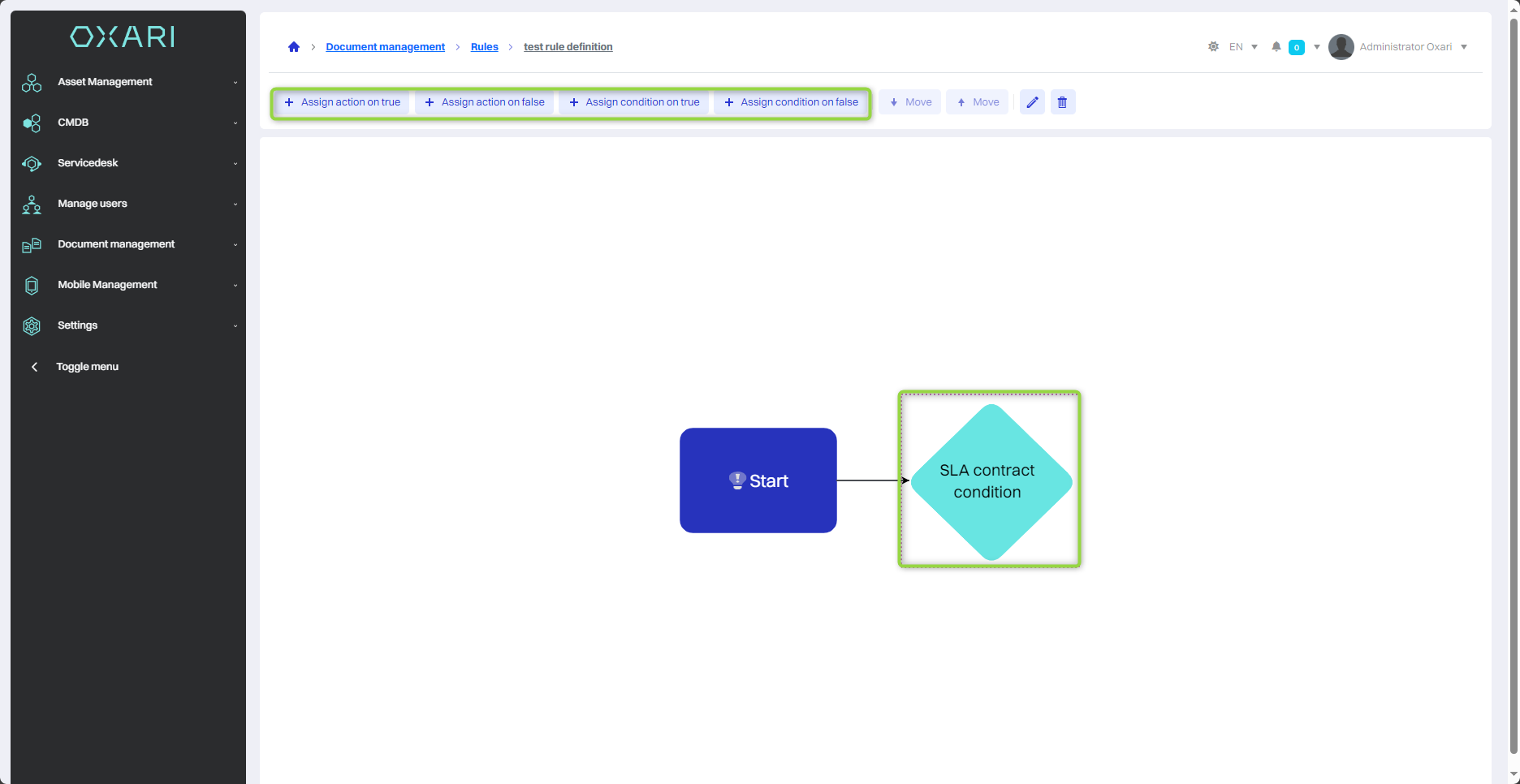
Assigning an action
In the example in question, when the condition of the "SLA" document type is met, to assign an action to it, click on the "Condition for SLA" tile and then select the "Assign action for TRUE" option.
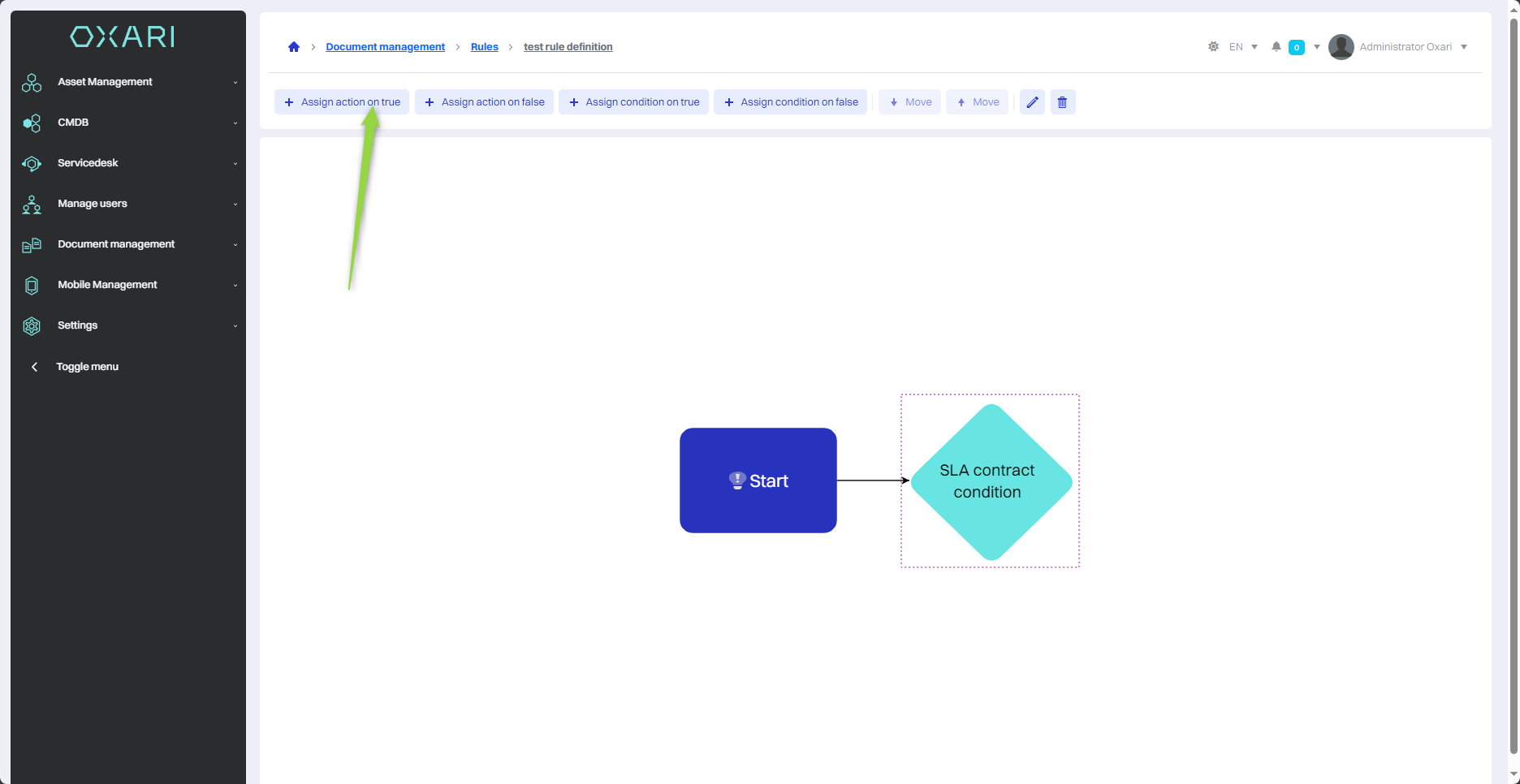
In the process of defining rules in the Oxari system, the user, after creating a condition, can proceed to assign an action. There are two options available:
| 1 | "New" - Allows you to create a new action that will be executed when the condition is met. |
| 2 | "Search" - Allows you to select actions that have already been defined in the Document Management > Actions section. For more on stocks: Go > |
In the example under discussion, a new action is created. To create a new action, the user should select the "New" option and proceed to the process of configuring this action.
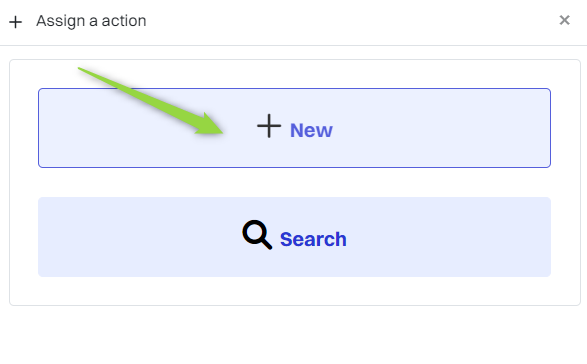
Then, in the "Select Action" window, there are action types to choose from, such as:
| 1 | Sending Email - Can be a notification of a new document or a change to it. |
| 2 | Set document color - What allows you to visually highlight a document based on its status, type or priority. |
| 3 | Sending SMS messages - Which can be used to quickly inform of urgent updates or requirements. |
In the example in question, the "Send Email" action is assigned, click in the field, and then click the "Select" button.
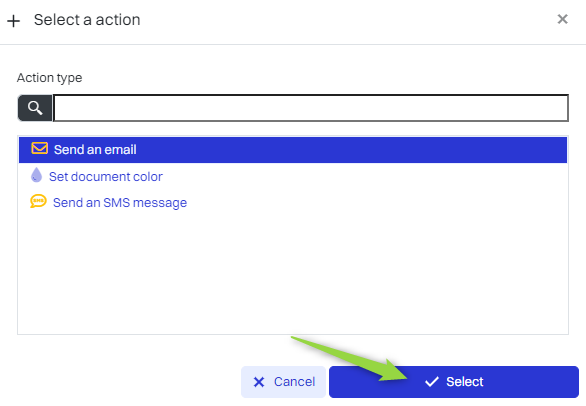
And then configure the message in question and click the "Save" button.
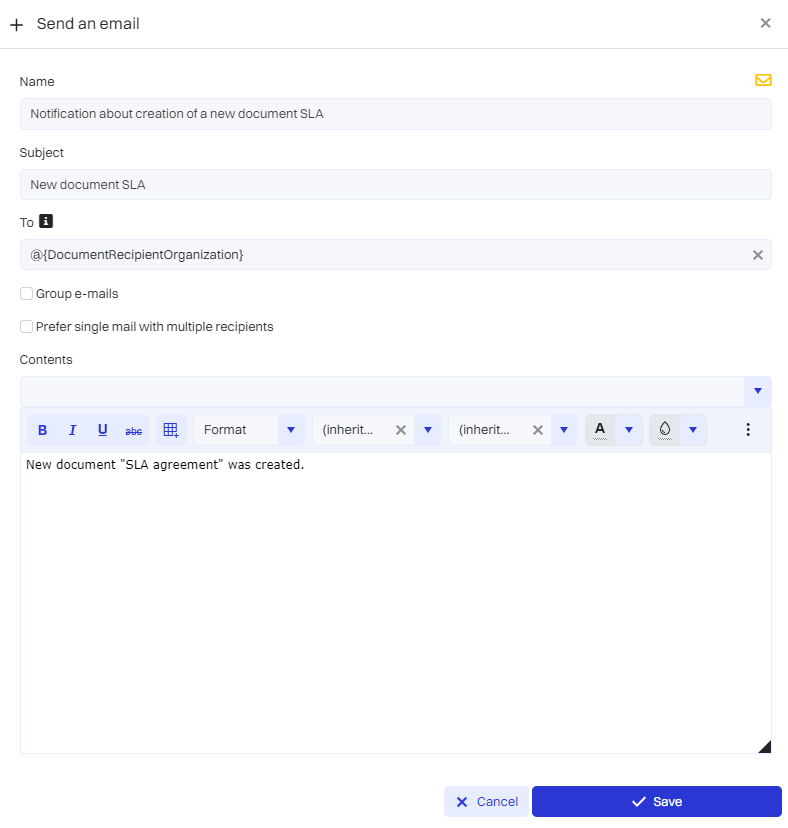
The given action has been added to the rule. It may happen that it is not immediately visible, in which case you need to refresh the page.

Once a new action is created in the Oxari document management system, it becomes available in the Document Management > Actions section and can be reused in various rules. To use an already existing action, in the "Assign Action" window, simply select the "Search" option, find the desired action in the list and confirm the selection by clicking "Save." This allows you to effectively use the action in different scenarios without having to create it again.
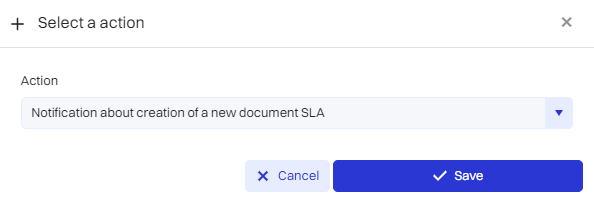
Editing/deleting actions and conditions
To edit or delete actions and conditions, simply go to Document Management > Rules. Then, to see more options for a rule, click the "Details" button next to the selected rule.
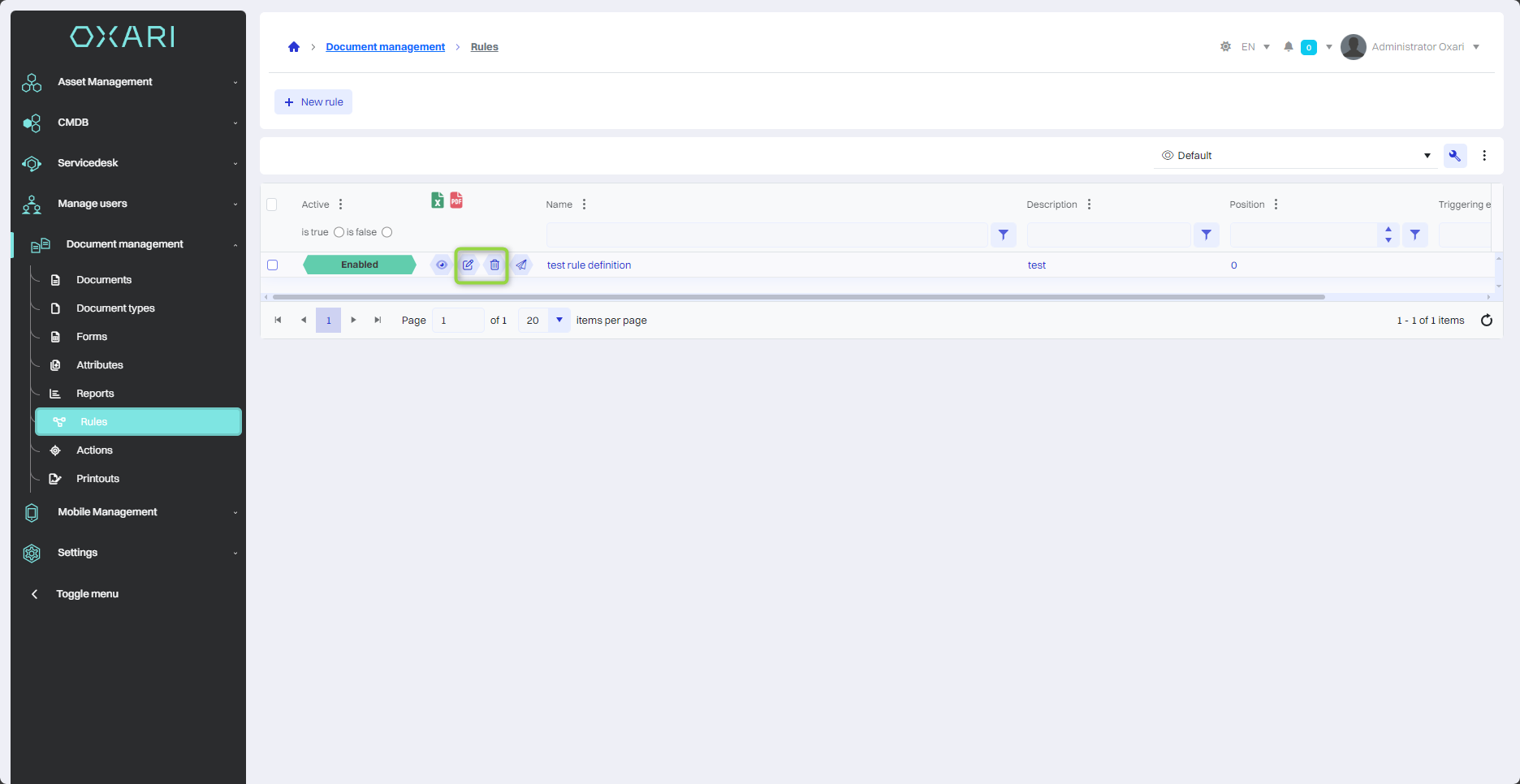
In the rule details, select the desired action/condition by clicking on the tile of the corresponding action/condition. The edit/delete options will be visible in the upper right corner.
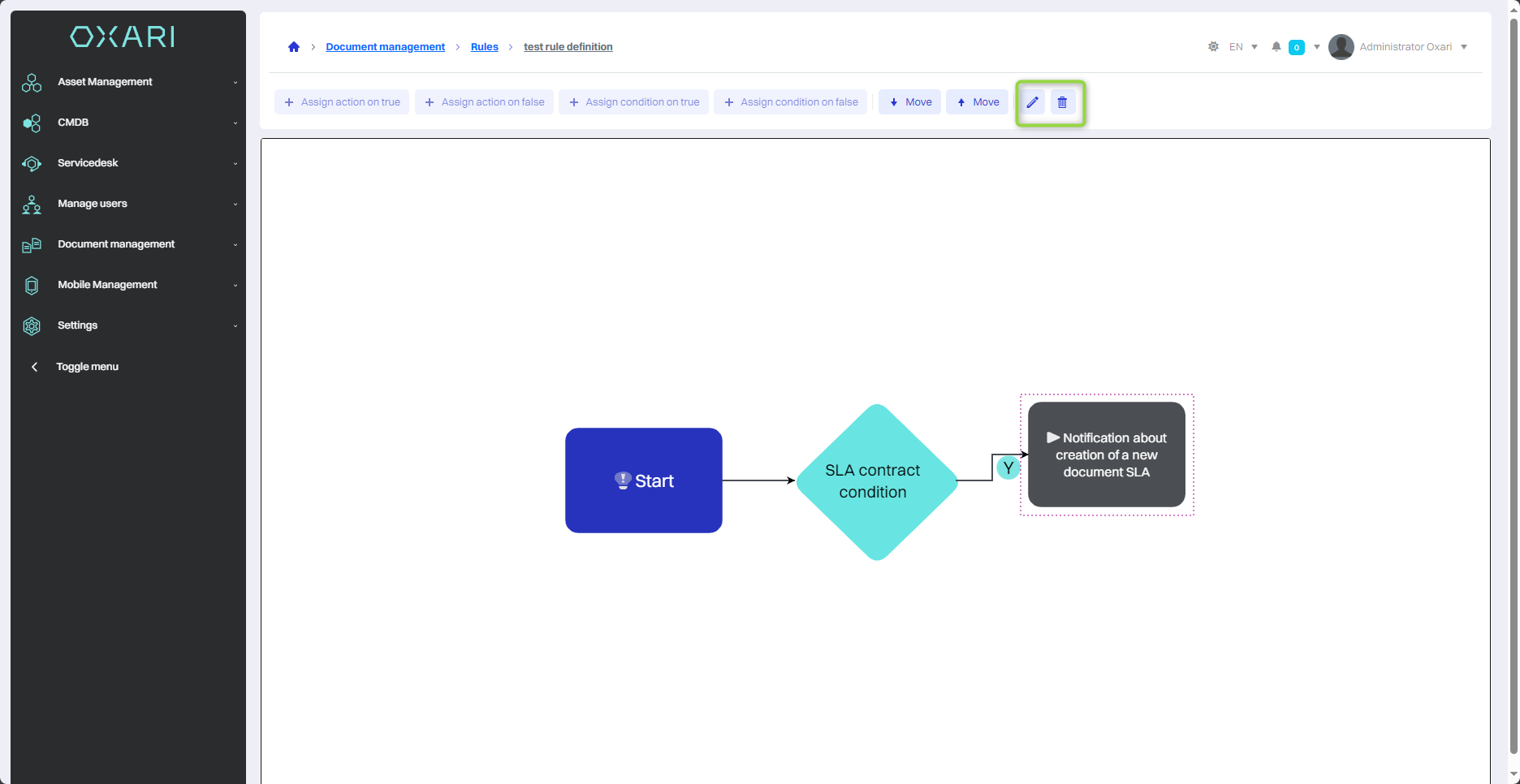
Editing/Deleting a rule
To edit or delete rules, go to Document Management > Rules. Hover over the desired rule. The edit/delete buttons will appear.

Activating/Deactivating a rule
Each rule can be activated or deactivated. To activate/deactivate a rule, go to Document Management > Rules. Hover over the desired rule and click the edit button.
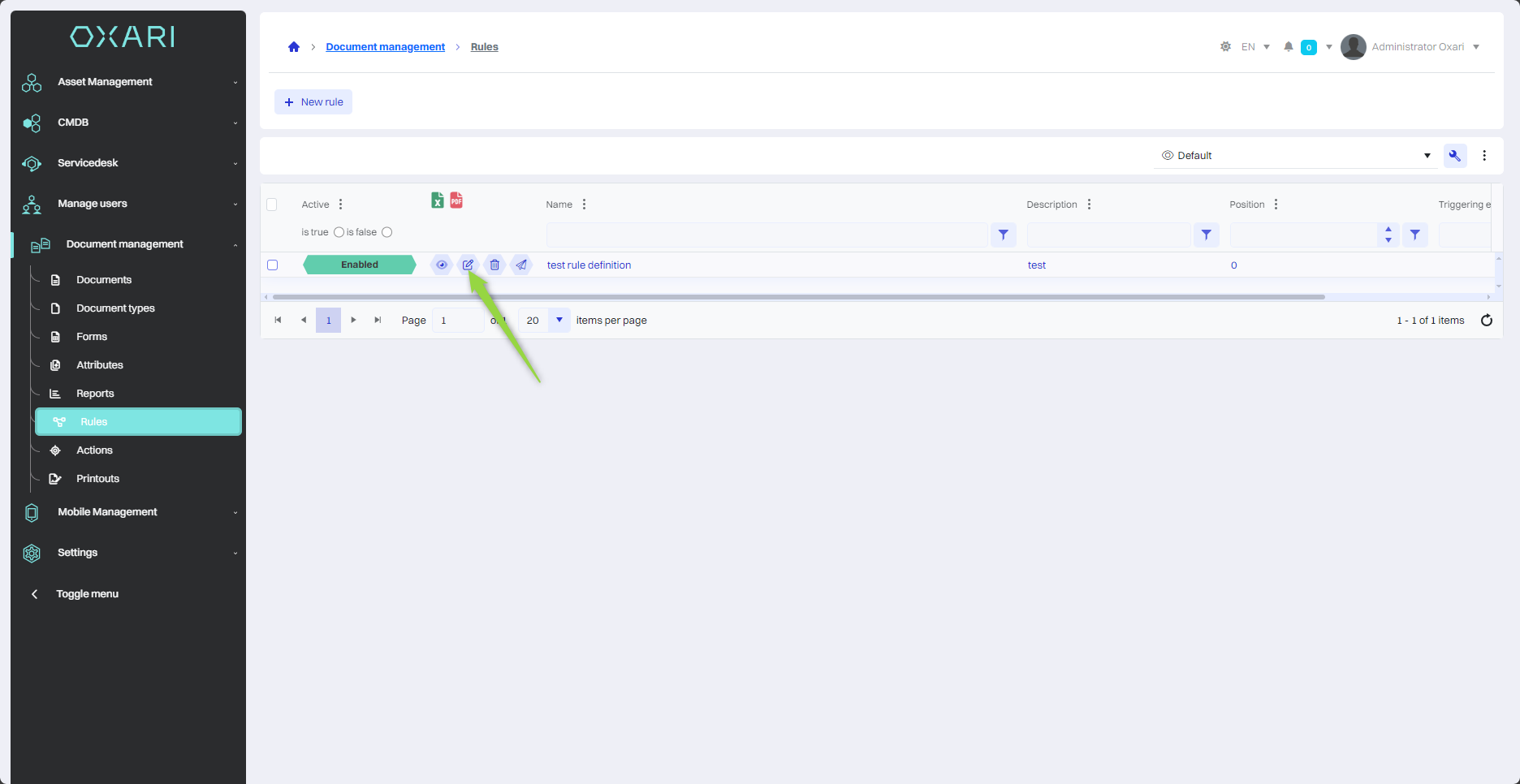
Then, in the edit window, click on the "Active" checkbox (a checked box means that the rule will be Active), finally click the "Save" button.

Testing a rule
To test rules, go to Document Management > Rules. Hover over the desired rule. A button to perform the test is displayed.
Only rules with an assigned schedule can be tested.

